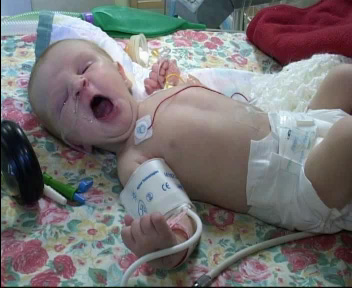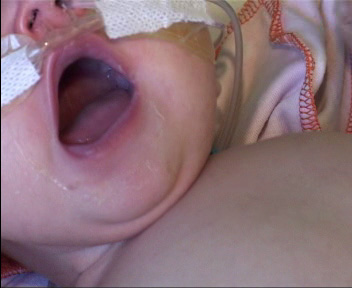Presentation course



This session describes the presentation of an infant or child with a cardiac problem. It covers both cyanotic and acyanotic heart defects.
Learning Objectives
By the end of this session you will be able to:
- List the variety of ways that an infant or child with a congenital heart defect can present
- Describe the assessment and management of a cyanotic infant or child with a cardiac problem
- Describe possible presentations of an infant or child with an acyanotic cardiac problem
Before commencing this session you should have:
- An understanding of various types of structural heart defects
Dr Anjum Gandhi has over 20 years of clinical, teaching and research experience in paediatrics and is a Consultant Paediatrician with training and expertise in paediatric cardiology at the Heart of England NHS Foundation Trust. He is also the Clinical Director for Children’s Services at HEFT and holds a honorary consultant contract in paediatric cardiology at Birmingham Children’s hospital.
Anjum is one of the founder members and the immediate past-Chair and Convenor of PECSIG (Paediatrician with Expertise in Cardiology Special Interest Group). Anjum has organised, chaired and participated in cardiology conferences and meetings for the RCPCH, RSM and PECSIG.
He has authored a number of articles in peer-reviewed journals and presented at national paediatric and cardiac clinical and research meetings. He is one of the authors of the cardiology curriculum approved by the RCPCH as a Special Interest Module (SPIN Module) and the Lead author of Revalidation guidance for PECs. He is also a member of Patient. Info (EMIS) team and has written and reviewed several clinical articles in this role.

- Midwifery Upskilling
- Posted By CRANAplus
- Posted Date: 2025-03-12
- Location:Alice Springs NT 870
- Midwifery Upskilling Designed for Midwives or GPs with relevant obstetric experience, the Midwife...
- Principles of Acute Paediatric Nursing
- Posted By Australian College of Nursing (ACN)
- Posted Date: 2025-03-11
- Location:Online
- This unit of study focuses on the assessment and management of infants, children and young people wi...
- Endometriosis and Pelvic Pain
- Posted By Australian College of Nursing (ACN)
- Posted Date: 2025-03-11
- Location:Online
- Endometriosis is the most common benign gynaecological condition worldwide, which is frequently mis-...
- Assessing and Managing Adult Pain
- Posted By Australian College of Nursing (ACN)
- Posted Date: 2025-03-11
- Location:Online
- The purpose of this unit of study is to provide the student with the necessary theoretical knowledge...
- Stress Response and Health Breakdown
- Posted By Australian College of Nursing (ACN)
- Posted Date: 2025-03-11
- Location:Online
- This unit of study aims to expand the student’s undergraduate understanding of applied clinical phys...








